There are a few unique survivors from the golden age of 1930’s aviation. The US Naval Academy Weems pieces are a rare breed and pedigree. Today, just a handful of pieces remain, and they are inextricably linked to the role that Longines, Captain P. V. H. Weems, and the US Navy played in the development of all so-called Weems models. The indelible US Naval Academy stamped dial encapsulates this remarkable relationship and serves as a reminder of this incredible chapter in history.
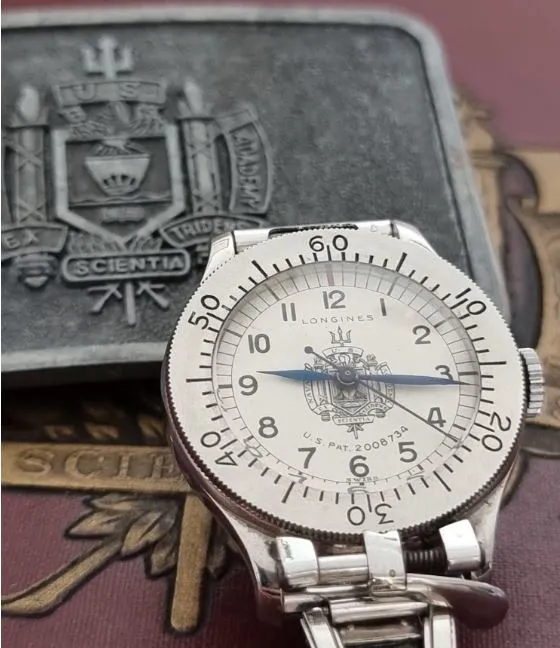
P. V. H. Weems role within the US Navy was a precursor for him becoming cognizant of the challenges and rigors of aerial navigation. His techniques, teaching, inventions, and equipment helped shape and progress the course of aerial navigation history forever and were used for the next thirty years. The handful of US Naval Academy dial logo second-setting Weems watch creations serve as a reminder of this incredible chapter.
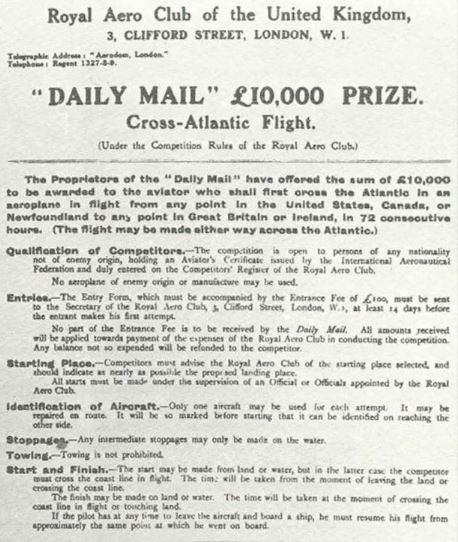
Captain P. V. H. Weems graduated the U.S. Naval Academy in the class of 1912. A year later, an incredible prize of 10,000 pounds was offered by the owner of the London Daily Mail, Lord Northcliffe, for a trans-Atlantic crossing by plane.
With war the offer was rescinded, and when reinstated in 1918, rule changes precluded mid–ocean stoppages effectively eliminating the US Navy’s (N) Curtiss (C) seaplanes.
The offer read, “the aviator who shall first cross the Atlantic in an aeroplane in flight from any point in the United States of America, Canada or Newfoundland to any point in Great Britain or Ireland in 72 continuous hours”.[1]
However, whilst technically excluded, a successful Atlantic crossing was about national pride for the Americans and the US Navy sort to bring home the top shelf prize. With meticulous planning, they formally commissioned the NC Seaplane Division on May 3, 1919 just two days after the first flight of the NC-4.
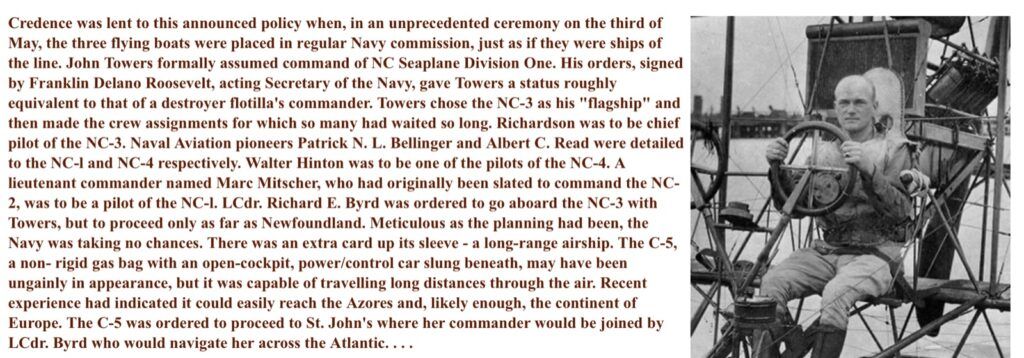
Three Nancies, the nickname afforded these US navy seaplanes set off, attempting to make the world’s very first trans-Atlantic plane crossing.
The five-man crew of the NC-4 were the only successful Nancy flying from New York State to Lisbon after a six leg, 19-day voyage including transit, maintenance and rest stops.
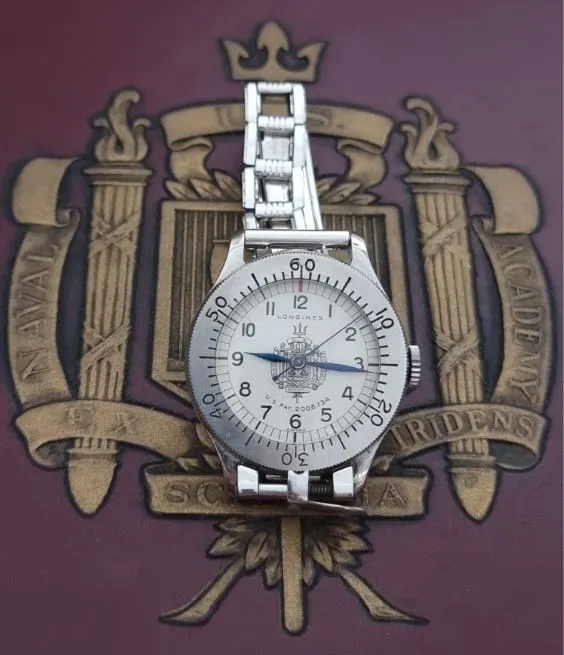
The citation given by Acting Secretary of the Navy, Franklin D. Roosevelt to Lt. Stone, one of the pilots on 23 August, 1919 for his part of the NC-4’s success read,
“I wish to heartily commend you for your work as pilot of the Seaplane NC-4 during the recent Trans-Atlantic flight expedition. The energy, efficiency, and courage shown by you contributed to the accomplishment of the first Trans-Atlantic flight, which feat has brought honor to the American Navy and the entire American Nation.”[2]
The Americans spared no expense with their Seaplane Division for the 3905 nautical mile crossing attempts of May 1919. They used more than 50 US Navy vessels[3] stationed enroute to assist with air navigation via radio communication and pilotage.
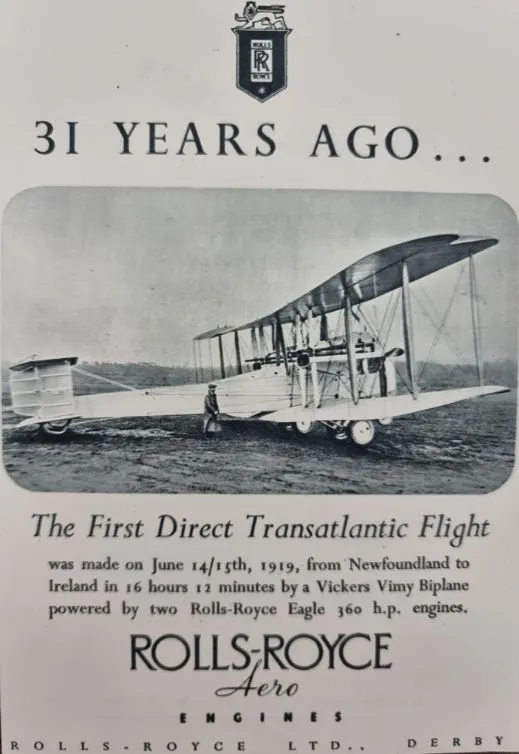
“Twenty-five hundred feet below on board a station tracking ship, a young navigator, Lt. Cdr. Philip Van Horn Weems of the U.S. Navy, gazed up and thought there must be a safer and simpler way than using a small armada of ships as beacons for the flight. Lt. Cdr. Weems, a brilliant, inventive and determined young man knew as he tracked that first flight that navigation was his destiny”.[4]
Just like Harrison’s conquest calculating longitude on the sea 200 years earlier, P.V.H Weems would soon play an inventive, integral and instrumental part in the overcoming the new challenges of air navigation. Weems angered traditional-thinking superiors by pursuing new methods of air navigation. The techniques, skills and equipment would last for the better part of three decades.
The honor and prestige was short lived and overshadowed by a non-stop Newfoundland to Ireland crossing just 19 days later by John Alcock and Arthur Brown on June 15, 1919. Their 1890 mile flight in a modified Vickers Vimy bomber took 15 hours 57 minutes enabling them to claim the 10,000 pound Daily Mail prize.
History was made a few short years later in May 1927, when Lindbergh claimed the $25,000 Orteig Prize for his non-stop New York to Paris flight. He used dead reckoning and pilotage to hit France’s Le Bourget airfield after a 3633 mile journey.
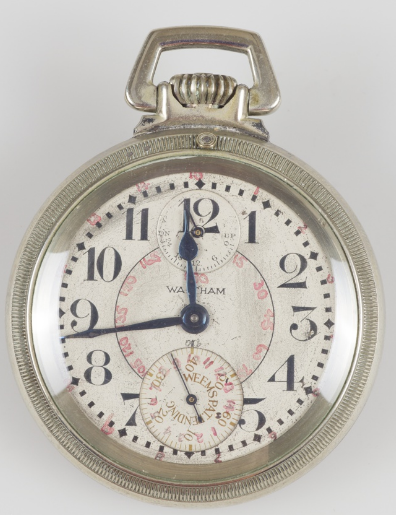
Incredibly, a post flight weather analysis by John Heinmuller, the man most responsible for recognizing early aviation endeavors noted that an unusual and unique weather pattern existed for the duration of his flight that accounted for a net wind drift of zero.
The very first time such a pattern had been recorded and “luck” had found Lindy one more time.
In the same year, Weems demonstrated new methods for celestial navigation in a US Navy mail plane off the coast of California. Whilst still a naval officer, he and his wife established the Weems School of Navigation at the US Naval Academy in Annapolis.
Lindbergh received tutoring by Weems and studied all elements of aerial navigation including celestial, Line of position and star altitude curves after getting lost on a flight from Cuba to Florida.
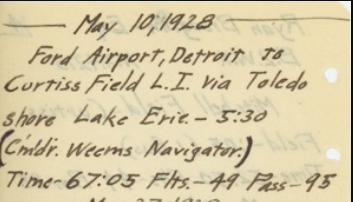
He helped promote Weems new air navigation business encouraging other early aviation pioneers to take up studies including his wife. The Lindbergh’s knowledge was soon put to work with an improved bubble sextant, the Weems plotter and the birth of history’s most important pilot watch – the so called second-setting watch.
The watch formed a critical and official part of the Weems System of Navigation, and the very first ‘Weems’ pieces modified Waltham Vanguard pocket watches.
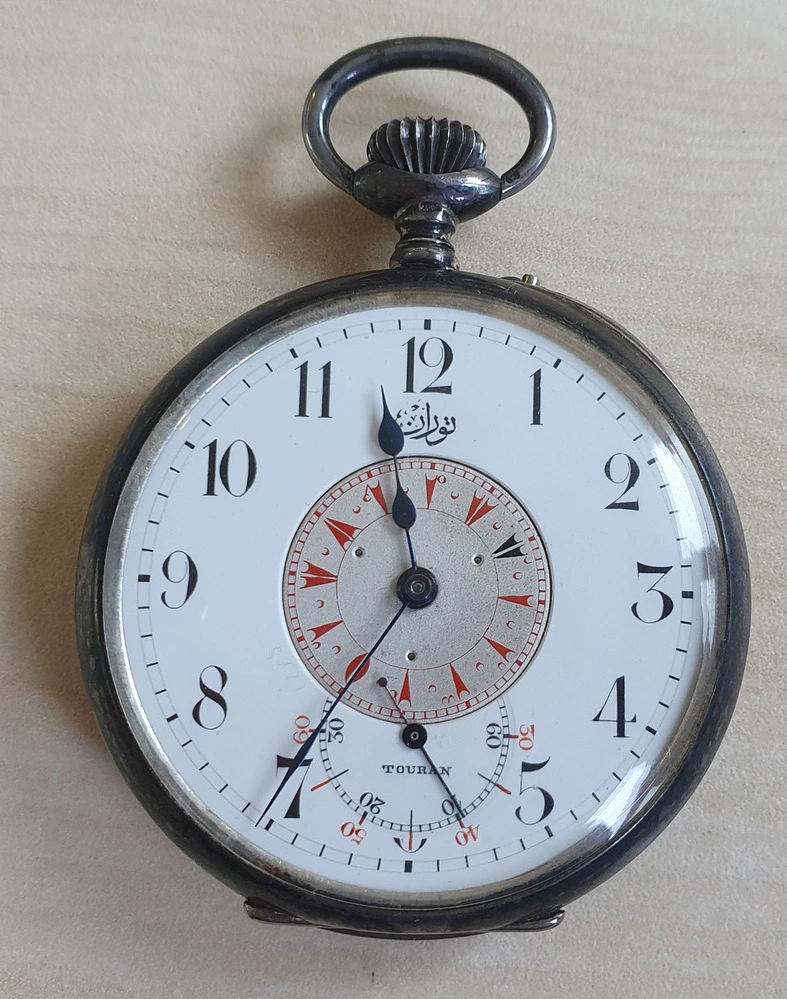
The modification work was undertaken by master watchmaker Harry Nash, who worked at the famous Jessops Jewelers, in San Diego. Lindbergh owned one of these, made the modifications himself and it survives to this day.
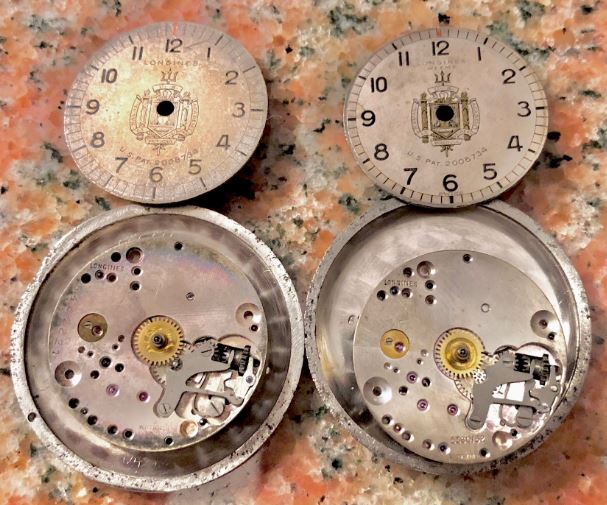
Weems concepts, along with the repurposing of a Longines turning chapter pocket watch from 1918 originally built for the Turkish market were central to the evolution of their Second-setting watch. This led to the development and testing of the two most important aviator wristwatches ever made – the large Weems and Hour-angle model.
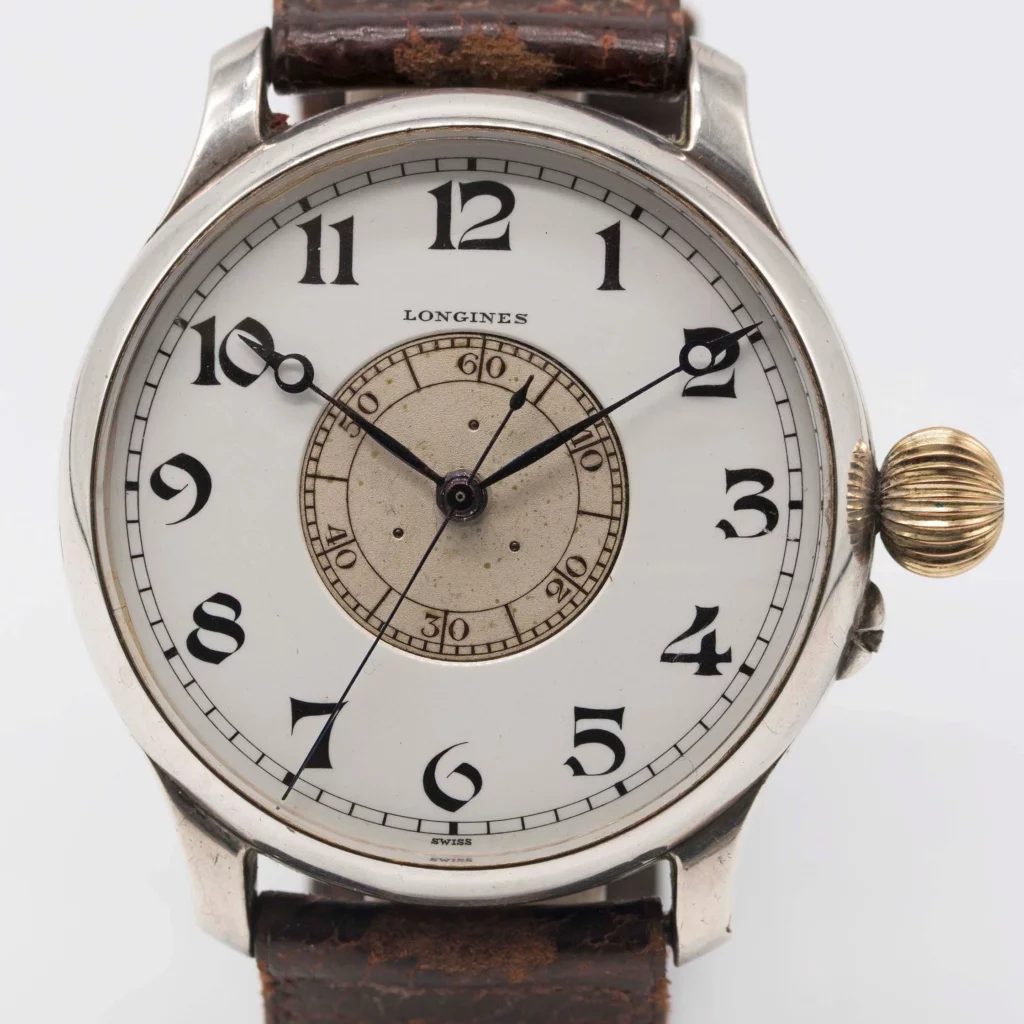
The Weems ‘Second-setting’ wristwatch allowed the exact second to be set, relative to the hour and minute hands. The inner chapter ring disc could be rotated in either direction to gain an additional accuracy of +/- 30 seconds by using a radio signal or other known exact timepiece.
Longines delivered their very first Weems Second-setting wristwatch with serial 3585867 to Wittnauer on the 30 November, 1928, for testing and it would actually be the watch of the creator. It now lies in the Smithsonian and was officially designated as a Type A-3 model by the American military and a “second setting navigation watch”[5] by the U.S Naval Observatory.
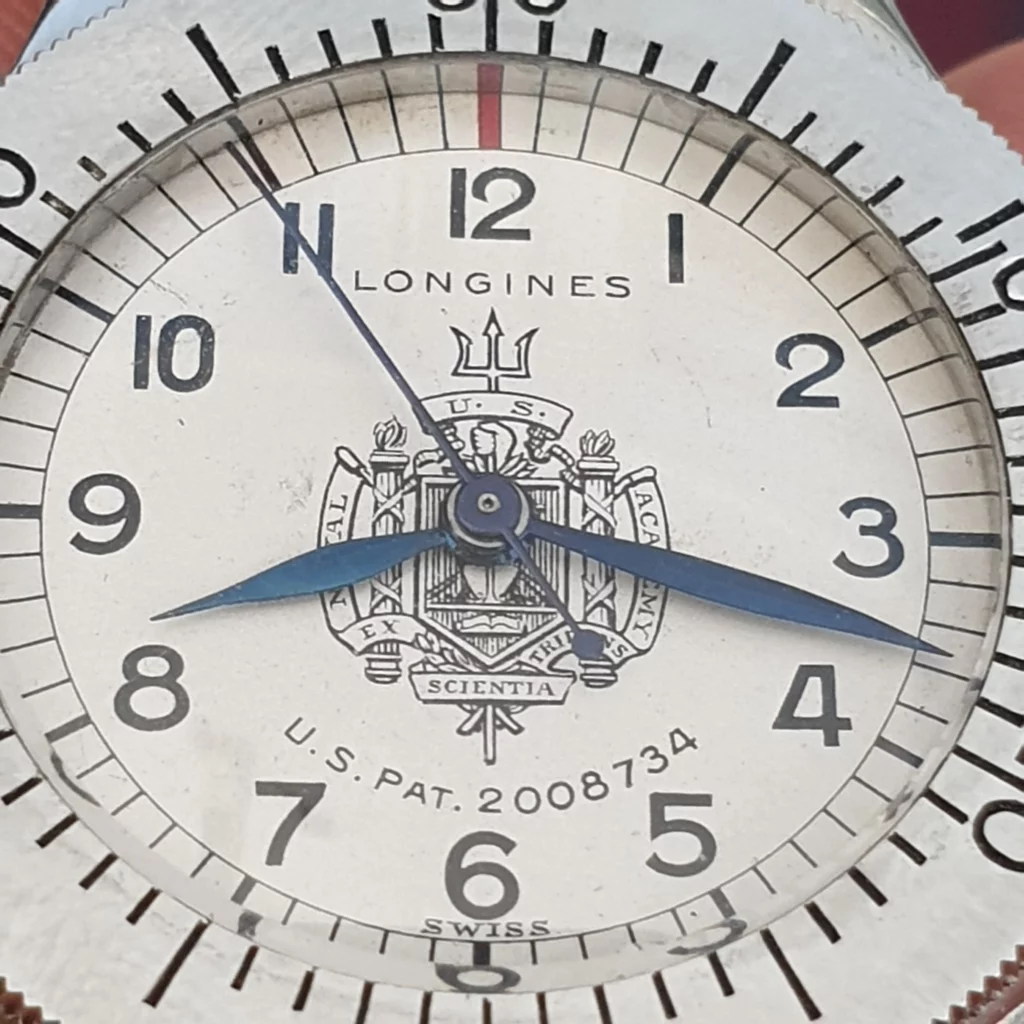
The watch requirements had been developed specifically for aviators with the Aircraft squadron’s battle fleet, making use of a central turning inner chapter, which could be rotated in either direction to gain an additional accuracy of +/- 30 seconds by using a radio signal or other known exact timepiece. This would allow the exact second to be set, relative to the hour and minute hands, improving time synchronization.
Rear Admiral Moffett, who was the chief of the Bureau of Aeronautics for the US Navy Department stated, “The suggestion… as to a moveable second-hand dial is considered to be a very valuable one, greatly facilitating the process of keeping a clock set to the exact time.” [6]
Before 1928, watches were used with sextants for celestial calculations and at best, accurate only to one minute.
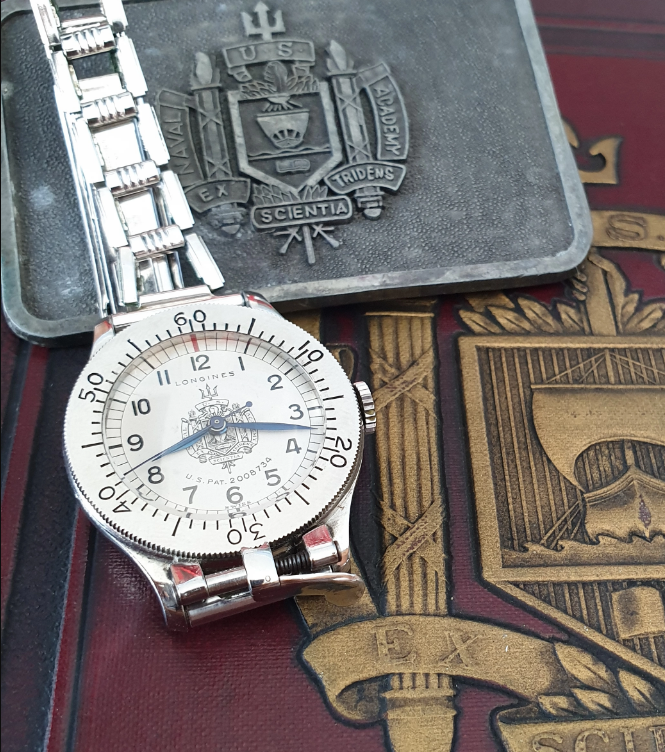
Patentee of the Bureau of Standards Sextant K.H. Beij when speaking of the model stated “The watch idea is most ingenious and I kicked myself for not having thought of it before”. [7]
Longines archives records indicate order (139X) by Wittnauer in 1929 for special test Weems watches, with delivery of this order on 10 April, and 2 May, 1930. The order included two sample versions of a large 47mm hour-angle prototype wristwatches for Lindbergh.
The first featured the hour-angle function on the dial, almost mirroring his hour-angle aircraft calotte which was delivered in January 1929. It is pictured in the Weems Air Navigation book (first edition) originally published in 1931.
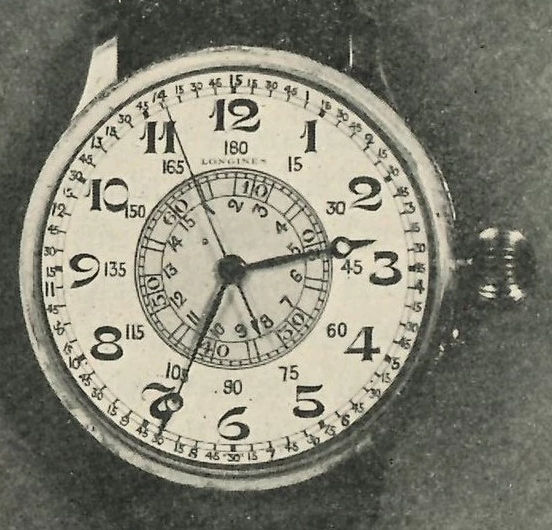
Whilst the other had unit of arc calibrations marked on a turning external bezel. The Hour-angle prototype with serial #49315** was the world’s very first turning bezel wristwatch. The Weems watch dial was transitional, incorporating Hour-angle design elements that would soon evolve and be used for the famous production model first introduced in late 1931. Both Hour-angle pieces simplified longitudinal calculations by converting time to arc, the 360 units marking the globe.
After first retiring for the first time from the US Navy in the early 1930s, Weems worked on expanding his air navigation training school whilst teaching the ‘The Weems System of Navigation.’ He improved the process and equipment required for determining one’s position in the air.

At its zenith there were fourteen Weems training locations across America and his courses were also offered by correspondence. Weems personally taught at the US Naval academy in Annapolis and San Diego. He would later employ and collaborate with the brilliant Australian aerial navigator Harold Gatty, who also ran his own Air navigation training courses.
Gatty enrolled in one of Weems courses and later explained to Weems wife that his course did the same for much less money. An incredible relationship formed between air navigation’s two greats.
The latter’s celestial skills had first been developed as an Australian navy cadet. After emigrating to America in 1927, he became recognized as one of the finest navigators in the world.
In 1929, Gatty assisted Roscoe Turner planning travel routes for Nevada Airlines with both stars going on to hold the US transcontinental record for a passenger plane. A year later he joined Harold Bromley on a failed nonstop Pacific crossing in the Tacoma. He went on to teach Anne Lindbergh the finer points of navigation before consulting and planning the Lindbergh’s US trans-continental flight record of 1930.
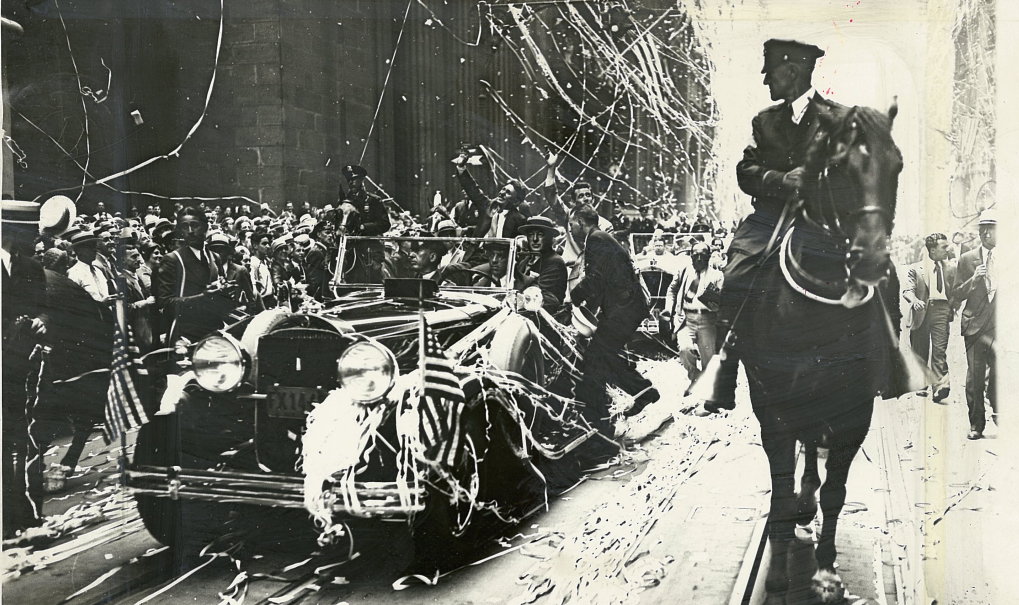
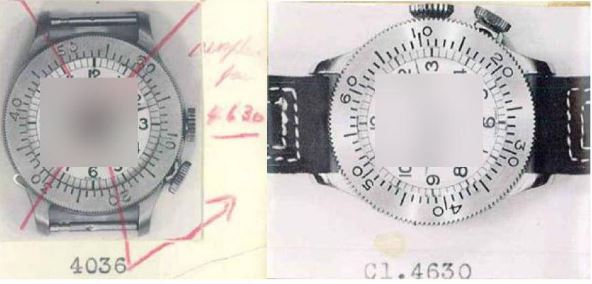
Lindbergh nicknamed Gatty, the ‘Prince of Navigators’[8] . A well deserved accolade before he paired with Wiley Post flying 24,903km around the world in one of the greatest aviation accomplishments ever, even to this day. Their feat in the Winnie May took just 8 days,15 hours and 51 minutes after their plane landed July 1, 1931.
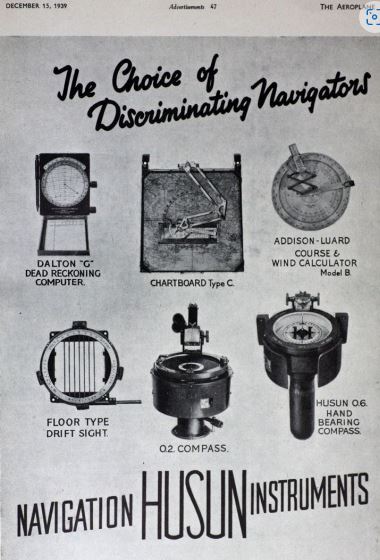
For parts of this incredible flight Gatty navigated totally blind. Post his round the world flight success, America was desperate to keep and utilize his incredible navigational talents and he shared a special relationship with the Americans.
This seemingly put him out of sync with the aviation interests of the Commonwealth. Consequently, he was denied rightful recognition for his ongoing contribution to aviation that he so rightly deserved downunder.
A special US Congress bill sought to allow civilians to receive the Distinguished Flying Cross, originally America’s highest military award for extraordinary aerial achievement.
Following the law change, President Hoover presented this incredible award to both Gatty and Post.
Further, the former was offered immediate US citizenship so he could take up the specially created post of senior aerial navigation engineer for the U.S. Army Air Corps. After declining to become an American, Congress enacted new legislation allowing a foreigner to hold the role.
Gatty would go onto develop a range of technical navigation instruments used by the American and other nations militaries, along with commercial aviation pilots.
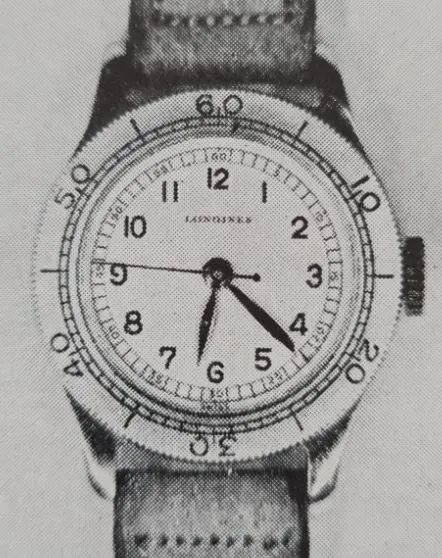
Whilst running his own navigation training in Los Angeles, he soon collaborated with Weems, and went on to teach and manage Weems office at the US Naval facility in San Diego.
Aerial navigation skills using the Weems system of Navigation, including pre-calculated position lines known as Weems curves, were taught to Pan American Airways, the US Army Corps, Navy, and other commercial airlines.
Like Weems, Gatty’s inventions revolutionized navigational techniques and some of this equipment was made under license by the English navigational instrument maker Hughes and Son.
His navigational equipment started with ‘an air sextant that used a spirit level to provide an artificial horizon’. He followed this up with production of an ‘Aerochronometer’, that offset the inaccuracies that aircraft speed produced when a flier was taking a navigational observation.
His most important contribution, however, was the Gatty drift sight, which he refined into a superb ground speed and drift indicator widely used by airmen during the late 1930s and eventually sold to the U.S. Army Air Corps.’[9].
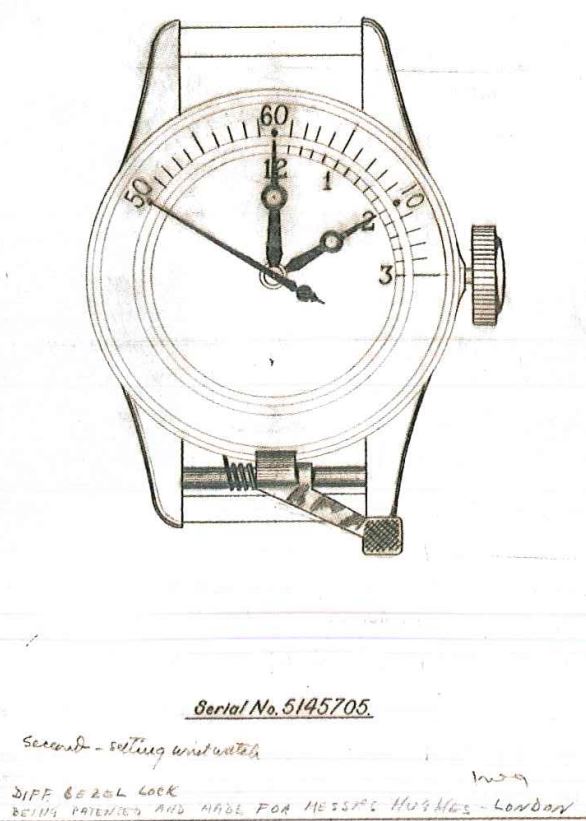
The brilliant pair – Lt. Cmdr Weems and Harold Gatty, dramatically improved the safety, processes and equipment for determining one’s position in the air. Both were responsible for educating many of the most influential aviators of the 1930s, shaped the aerial navigation programs of U.S. airlines, the US Army Corps and the US Navy.
Weems in describing Gatty’s talents said, ‘he has done more practical work on celestial navigation than any other person in the world today.’[10]
These techniques and equipment would be at the forefront and dominate long-range aerial navigation over almost three decades.
One of the essential pieces of aerial navigational equipment in the 1930’s was a Second-setting watch. This was improved upon by the Hour-angle model that allowed the pilot to calculate longitude. Radio and celestial navigation techniques were added to dead reckoning and pilotage. The Weems watch allowed for making more accurate navigational calculations based on time synchronization with radio signals and later versions of the watch were also regulated for sidereal time.
The large 47mm Weems watches used a turning inner chapter, whilst the turning bezel on the so called ‘New second-setting’ watches facilitated the same process.
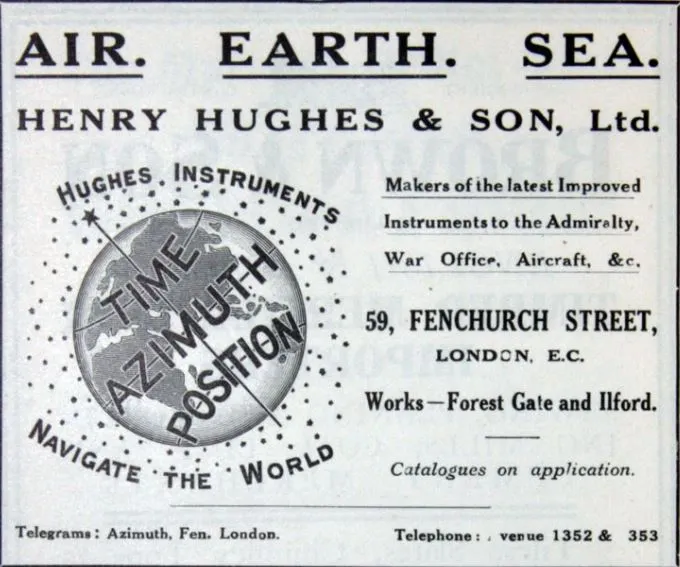
It seems fitting that the US Navy man who witnessed part of the world’s very first trans-Atlantic crossing in 1919 would once again be a key architect, shaping the development of the New Longines Second-setting Weems watch.
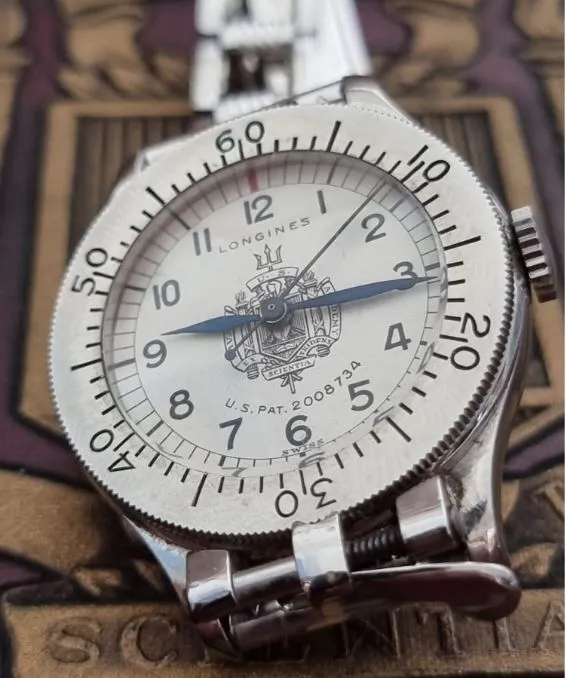
Longines archives note supply of a solid silver turning bezel Weems watch to Wittnauer with serial number 5145705, using calibre 12.91, in Feb 1932.
The US Navy, San Diego and Harry Nash would once again play pivotal roles in the Weems watch history development.

It is quite possible given the close relationship of Weems and Gatty, that the latter’s inventive spirit may also have played a hand in the new second setting watch development.
An illustration with serial no. 5145705 marries up with a February 1932 delivery of a Longines turning bezel Weems watch absent a locking device to Wittnauer. The thumb lock on the illustration appears to mirror that of Longines ref 3931 which was first pictured in Longines catalogues in 1935.
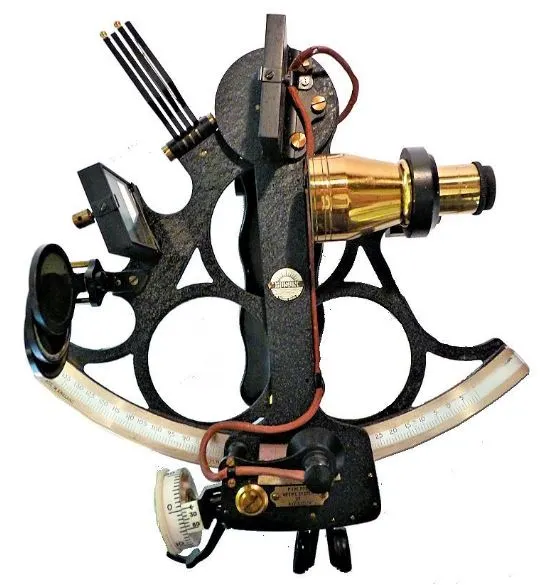
However, whilst this may appear largely the same and may in fact be the precursor of reference 3931, it is a small anomaly in the Longines history of the smaller new Second-setting Weems models.
The delivery information detailed at the bottom of the illustration appears to be Messrs (Henry) Hughes & Son in London, who were a firm specializing in making marine and aeronautical navigational instruments.
It is likely this illustration, or a derivative thereof, was later developed into the Weems ref 3931 model which arrived in the market in 1935 with the ref 3930 shortly after.
It is known Weems original HUSUN branded sextant, came from this very firm and that he shared a business and personal relationship with the firm. So too, Gatty used them to manufacture some of his navigational aids under license by them.
The very first New Second-setting prototype piece is a silver Longines turning bezel watch without a locking crown supplied to Wittnauer in 1932. This Longines piece with 5145705 per the famous illustration was then modified by Harry Nash for Hughes and Son with a special thumb bezel lock. It would be revived following the after effects of the Great Depression. This event soured and dampened all markets including aviation and led to a wholesale collapse in Wittnauer sales of Longines and their own branded watches.
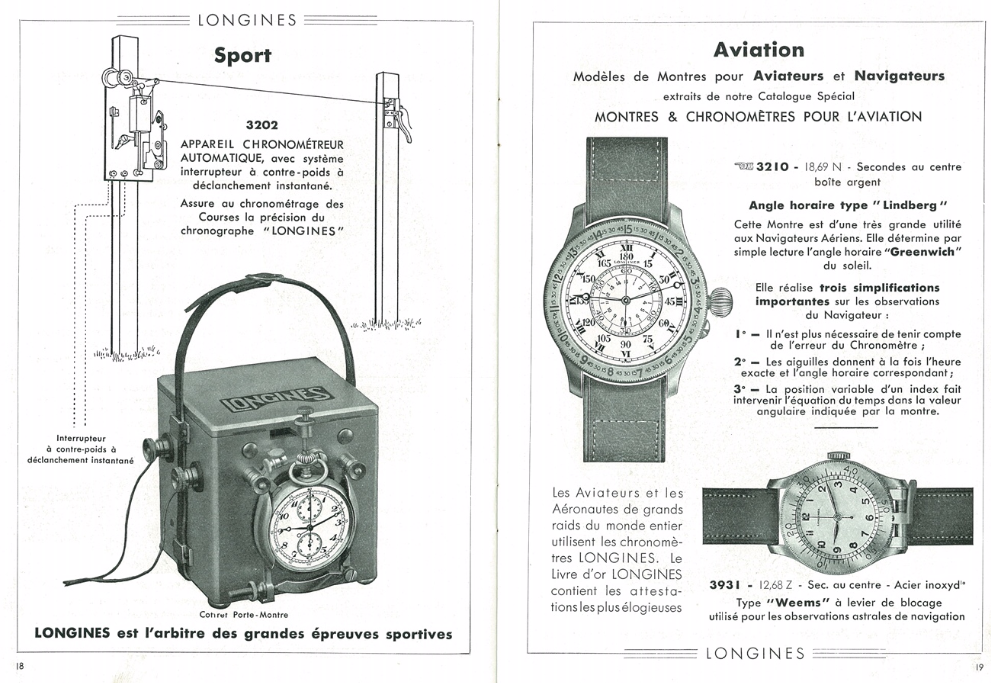
Wittnauer’s US sales of Longines watches collapsed to 1890 levels, almost leading to their bankruptcy. This served as a pre-cursor to the formation of Longines-Wittnauer Watch Co in 1936. The challenging tumultuous period ensured delays in the development of the smaller New Second-setting production models.
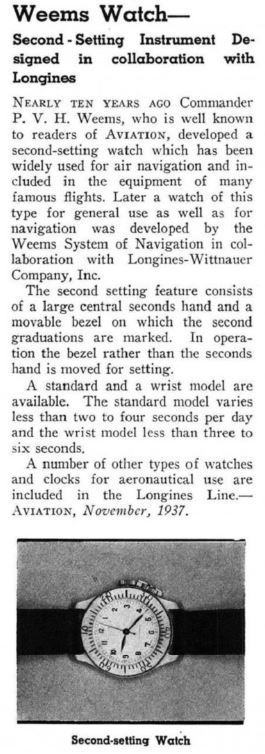
In 1936, whilst in London at the UK agent Baume, Weems communication with Longines detailed a list of technical notes list in the development of the New Second-setting watch. Correspondence also points to their wanting to place the bezel lock device away from the lugs.
“What he is suggesting has already been accomplished in a slightly different manner. Instead of the break lever working on the lug, which seems very practical, we have designed for stoppage to be enacted via a small additional crown at 4 o’clock, but which could also be placed elsewhere, at 2 o’clock, or on the other side of the lugs at 8,9 or 10 o’clock”. [11]
Nickel silver prototype samples of the New second-setting watches with locking devices on the turning bezel were supplied to Weems at Baume in late 1936. [12]All of the smaller steel New Second-setting references utilizing a turning bezel are exceptionally rare.
However, without exception the two most elusive and first new second setting Weems iterations are the ref 3930 with a locking device covering the crown and the ref 3931 with a thumb-lock. The latter allowed the bezel to rotate when pressed, enabling the the second setting function adjustment.
Longines archives note that the ref 3931 reference was first seen in a catalogue in 1935 and the ref 3930 soon after. Albeit the first known surviving pieces of both references herald from 1937.
The ref 3931 features a thumb lock device at the 6 o’clock position allowing the bezel to be rotated when pressed. There is an illustration of ref 3931 in a French Longines catalogue. The US Navy genome once again appears dominant in Weems history. There are three known US Naval Academy Weems references – the 3931, 4036 and 4037.
Today, there are just a handful of surviving US Naval Academy logo examples in all configurations. This reference used both calibres 11.68Z and 12.68Z.
This same thumb lock feature also appeared on just a handful of small steel Lindbergh reference 4320 models sold as late as 1938.

The Weems 3930 and 3931 references first produced in February 1937 were discontinued almost immediately, and 1936 Longines communication concerning technical notes during development indicates Longines own hesitation with the thumb lock device at six and a preference for other locations on the case.
The replacement Weems model ref 4036 was first born October 15, 1937, and featured a crown at four that enabled the bezel to be locked. Whilst the ref 4037 model had no bezel lock at all. Both references had a limited lifespan and were soon changed to the larger 34mm ref 4629 and 4630. The last reference was only used for civilian orders and by the British RAF (marked 6B/159 Mark VIIA).
A very rare US Naval Academy piece with ref 4036 was supplied October 15, 1937, just six weeks after an earlier order of the ref 3931 USNA pieces. This later example featured a crown at four that enabled the bezel locking function.
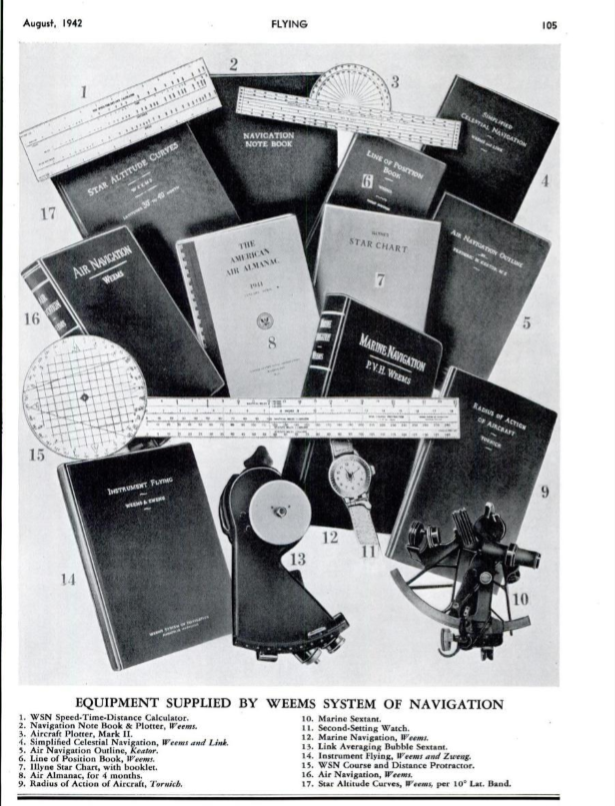
A mid-war 1942 Weems advertisement featured his training manuals alongside a ref 3931 US Naval Academy watch.
Whilst not a technically issued watch it would most likely have only been available only through the US Naval Academy in Annapolis – where Weems ran his Navigational training.
Many Longines Weems watches, including all the 28mm A-11 Weems watches supplied to America for civilian and military use were recased locally.
However, Longines archives note that the special US Naval Academy coat of arms dial was produced by them in Switzerland. The USNA watches were supplied as complete watches to Wittnauer.
The dial features the Academy’s Latin crest and motto – Ex Scientia Tridens, which means ‘Through Knowledge, Sea Power’.
The US Naval Academy was first established October 10, 1845 during the tenure of Secretary of the Navy, George Bancroft. It is the second oldest of the five US service academies and the Annapolis academy educates midshipmen for service in the officer corps of the United States Navy and United States Marine Corps.
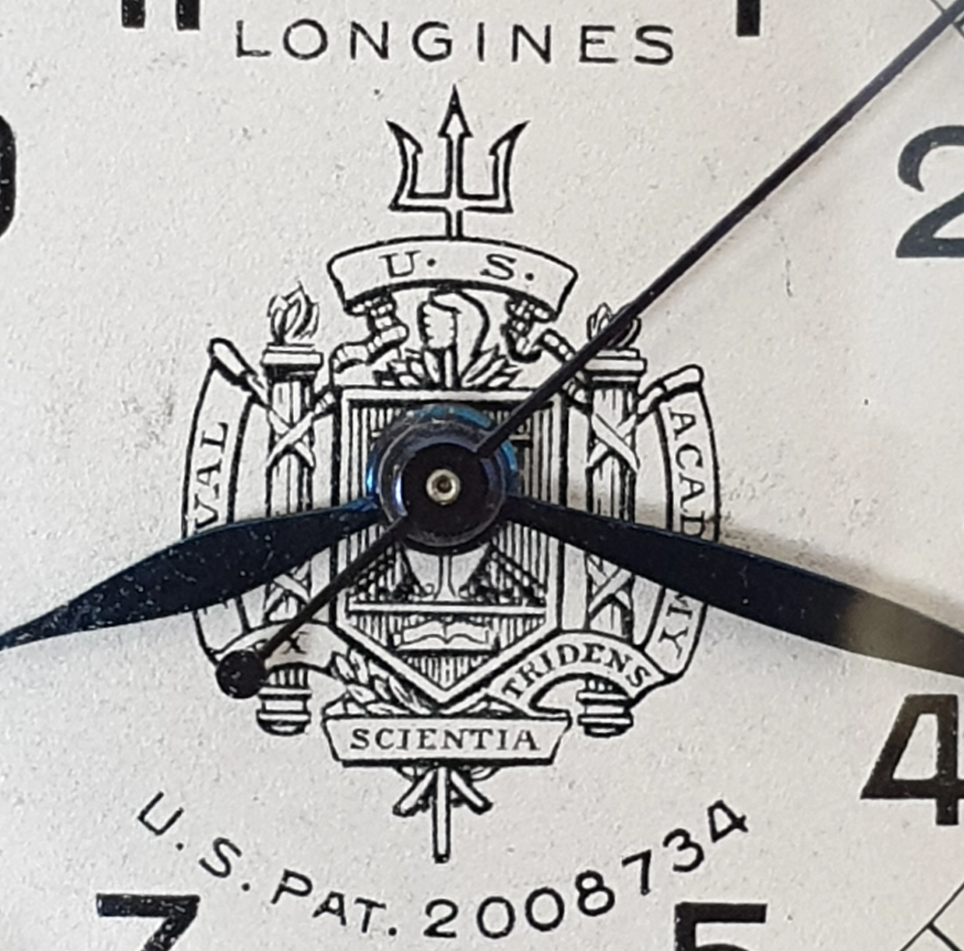
All US Naval Academy dials prominently feature Weems US Patent 2008734 text, which was first approved on July 23, 1935, on the dial above 6’clock.
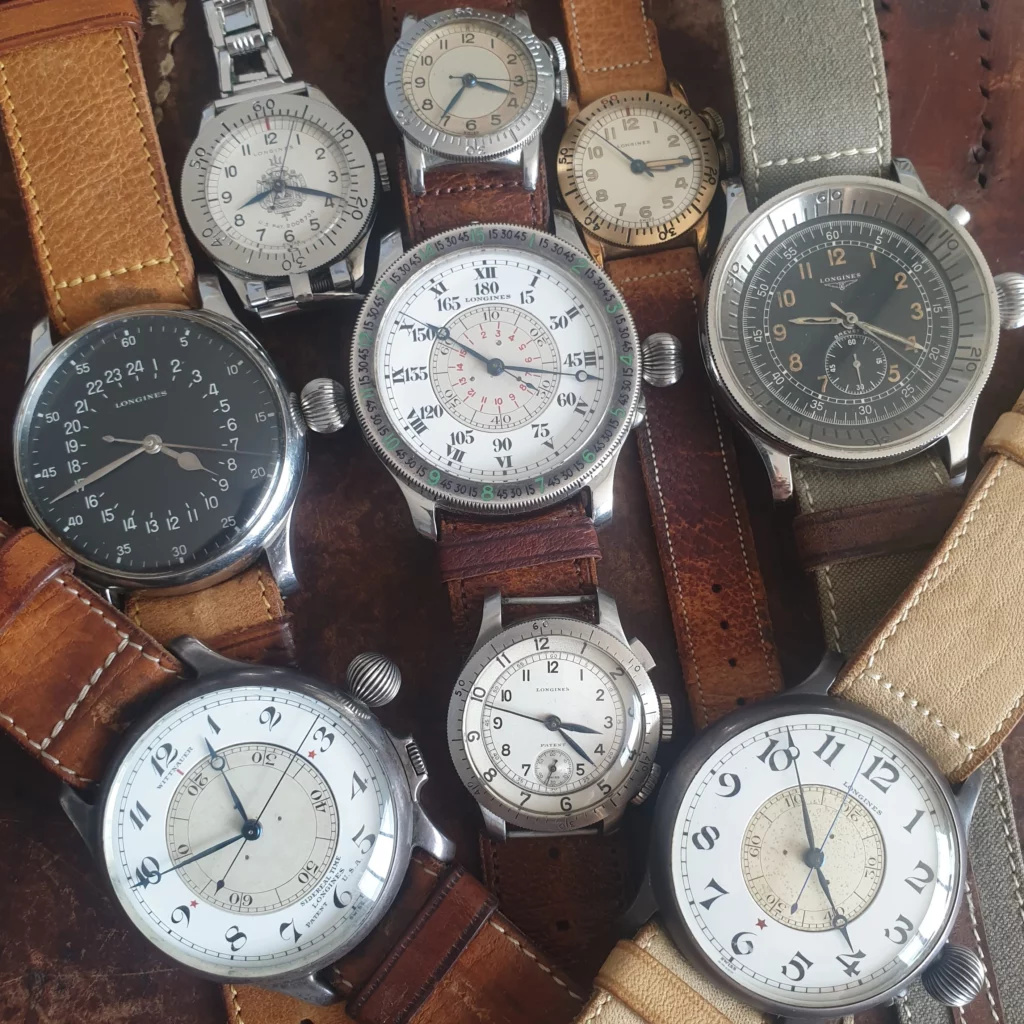
A Longines artist’s drawing and pricing of the ref 3931 exist in a French Longines catalogue, and remind us of a different time when the Weems was replied upon as an aviation tool watch.
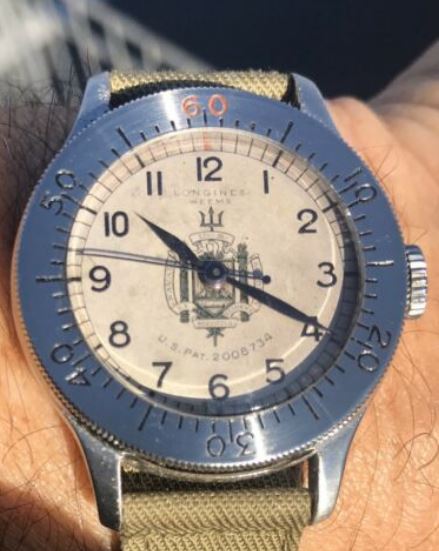
More than 100 years ago, the US Navy ‘Nancy’ NC-4 seaplane made history crossing the Atlantic first in May 1919. It led to the emergence of the brilliant inventor and master navigator US Navy, Lt. Cmdr Weems, who played the greatest role conquering the air navigation challenges of aviation’s golden age. He was instrumental in creating the so called Weems and Hour-angle watches – the two most important watches in aviation history.
Together, with one of the greatest aerial navigators of this time, Harold Gatty, their technology, equipment and training shaped navigation during aviation’s golden age.

Today, perhaps the rarest Weems iteration of all, a ref 3931, and a handful of other rare reference pieces (4036/4037) bear the enduring mark of the US Naval Academy on the dial. Their beautiful coat of arms dials were supplied by the St Imier master dial maker, Flückiger et Fils AG, and stamped ZJ, for Zelim Jacot, the original founder’s initials.
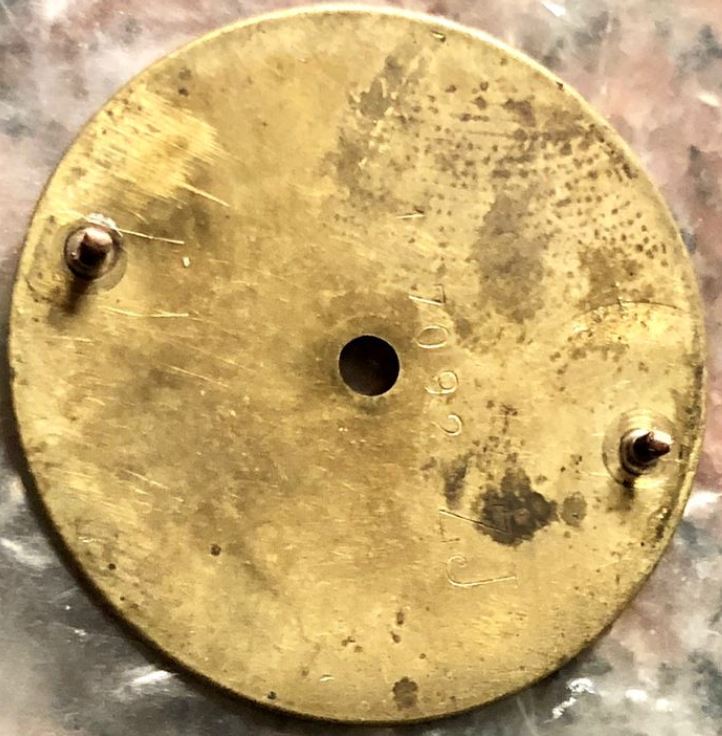
Almost two hundred years after Harrison brought greater certainty to the issue of longitude on the high seas, P.V.H Weems and Harold Gatty were both instrumental playing a critical role conquering the unique challenges of aerial navigation. As radio communication expanded, the ability to synchronize a chronometer with a known accurate radio signal source source was essential.
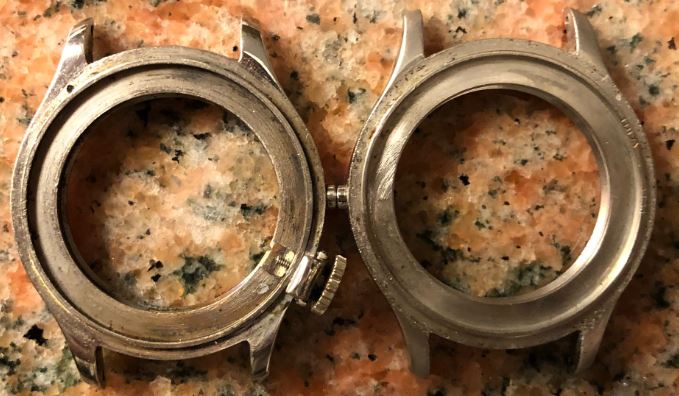
The first prototype large Longines Weems was delivered in November 1928, and tested by Weems in with the Bureau of Aeronautics, the US Navy’s support organization for naval aviation which functioned from 1921-1959.
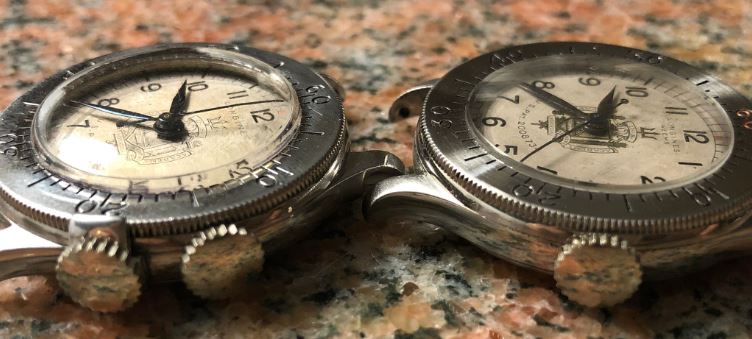
All Weems are inextricably tied to the role that the 1912 US Naval graduate, Weems, played after witnessing the incredible US Navy trans-Atlantic seaplane flights of 1919.
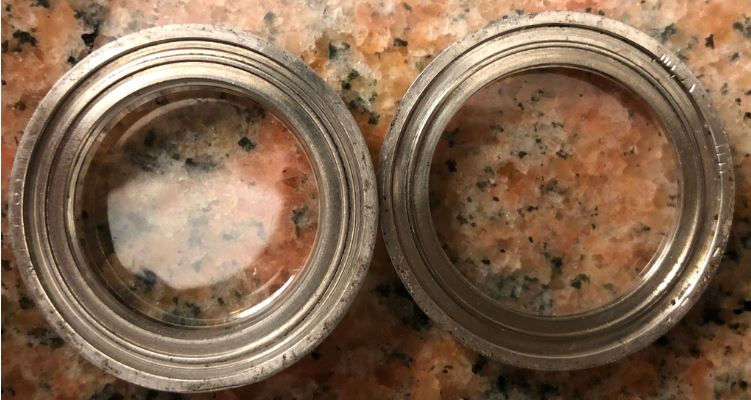
It seems fitting that Weems, his navigational ideas, techniques, and the incredible Weems US Naval Academy watches first born in 1937 – have their genetic code anchored to the exploits and feats of the man who witnessed the first successful trans-Atlantic crossing in 1919.
P.V.H Weems shaped avigation for almost three decades, alongside, and as a consequence of his US Navy engagement, exploits and service. He was ably assisted by the man Lindbergh named, the Prince of Navigators, Harold Gatty. Today, the few surviving examples serve as an important reminder and window to the incredible role that Weems, the US Navy, and Longines played in their history and development.
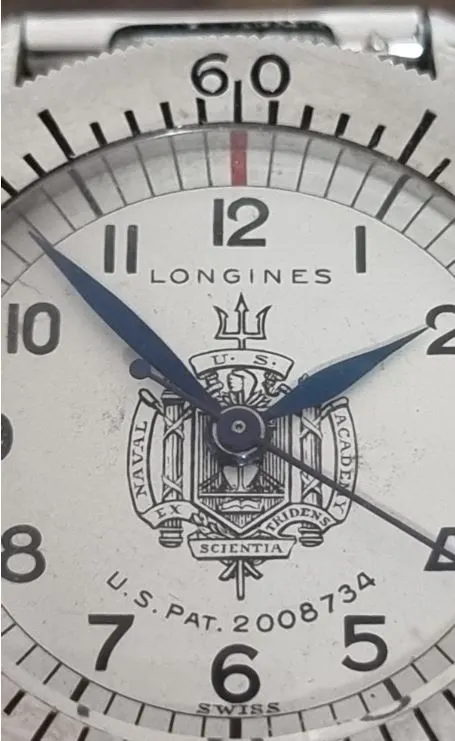
[1] Flight magazine. 21 November 1918. p. 1316
[2] 1919: NC-4 Transatlantic Flight – Coast Guard Aviation History (cgaviationhistory.org)
[3] The U.S. Navy’s Curtiss NC-4: First Across the Atlantic | HistoryNet
[4] Weems & Plath, Weems & Plath Thermometers, Weems & Plath Hygrometers, Weems & Plath Barometers, Weems & Plath Weather Stations (weathershack.com)
[5] Air Navigation Weems 1931 first edition p400
[6] Air Navigation Weems 1931 first edition p400
[7] Air Navigation Weems 1931 first edition p402
[8] Terry Gwynn-Jones, ‘Harold Gatty: Aerial Navigation Expert,’ Aviation History Magazine, (World History Group, September 2001), http://www.historynet.com/harold-gatty-aerial-navigation-expert.htm (date accessed: 19/08/16).
[9] Terry Gwynn-Jones, ‘Harold Gatty: Aerial Navigation Expert,’ Aviation History Magazine, (World History Group, September 2001), http://www.historynet.com/harold-gatty-aerial-navigation-expert.htm (date accessed: 19/08/16).
[10] Harold Gatty: Aerial Navigation Expert | HistoryNet
[11] Longines through Time The story of the Watch Stephanie Lachat p113
[12] Longines through Time The story of the Watch Stephanie Lachat p113
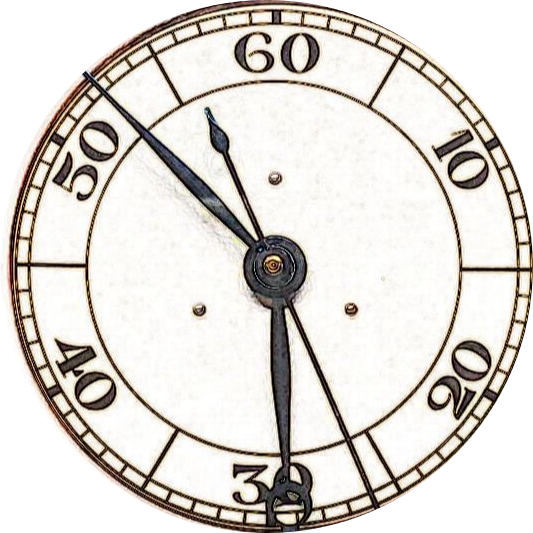
March 16, 1966, astronauts Neil Armstrong and David Scott were the crew of Gemini VIII, the 12th American manned spaceflight mission. Pictured on their way to the launchpad, David Scott wore a NASA-issued #08 Omega Speedmaster 105.003 at his left wrist while Neil Armstrong had chosen to wear an extra wristwatch besides his NASA-issued Omega Speedmaster chronograph.
Note at Armstrong’s right forearm the big crown Longines-Wittnauer Weems aviator wrist watch with striking big numbers dial as worn by James “Jimmie” Mattern (1905-1988), Armstrong’s childhood aviation hero.
Three years later during Apollo 11, Neil Armstrong also carried a flight logbook owned by James Mattern onboard lunar lander “Eagle” !
#MoonwatchUniverse
Greetings and wonderful Philippe… a very big thank you for the information, link and would really enjoy more of your insights and knowledge in this space. I will drop you a mail. Andy 😉
Very informative history. Thanks.
I have a Swiss Air limited edition Longines Weems (2nd edition). My favorite timepiece.
Regards, Mike.
Greetings Mike, many thanks for your feedback and wonderful to hear that you enjoyed the read. Keep ticking, have a laugh or two and enjoy the Swiss air piece mate. Sincere regards Andy
That’s more NAVAL history and very valuable to me since I read up on as much as I can. Iam fortunate to have the watch made by CITIZEN for Navy Blue Angels and treasure it very much.
Greetings Robert and wonderful hearing that you learnt something new from the article and that it develops your interest in the space. Thanks for visiting and for your feedback. Andy 😉
Wonderful reading this article Andy! I see you put a lot of hard work into it. I really enjoyed reading the article and found it very informative!
Thank you for your wonderful input, insights,information and all of the help in pulling this together Seiji.